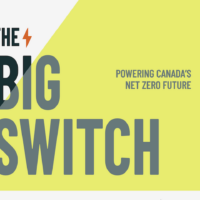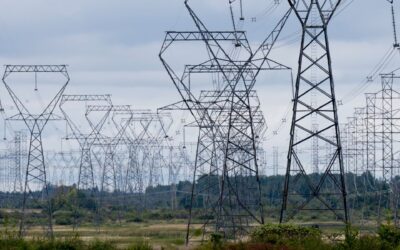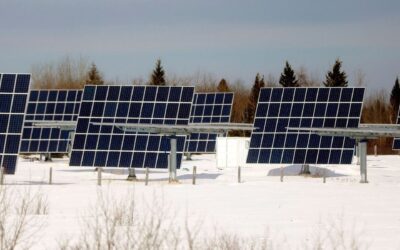As President Biden addresses Parliament this week, the ink will be drying on the next federal budget.
The timing of Biden’s visit is notable, since Canada’s answer to the U.S. Inflation Reduction Act is expected to feature prominently in Budget 2023.
But how Ottawa can create the conditions for a competitive, growing economy is not the only priority we’re watching in this budget—the government also needs to continue delivering on Canada’s climate-changing pollution-reduction goals, and has said it intends to roll out specific measures to help keep life affordable.
Smart policies can deliver on all three objectives at once. To demonstrate how, let’s look at the two biggest climate policy priorities that this budget is poised to tackle—clean investment and clean electricity.
Priority 1: Attracting investment and spurring clean competitiveness
The scale of U.S. investment in climate solutions is welcome. But it also risks drawing clean growth investment and projects south of the border at Canada’s expense. To compete, Canada needs its own, made-in-Canada response. For details on what that should include, we’ve outlined seven recommendations to leverage public investment to help Canada compete in the global energy transition.
In particular, we expect to see new details in Budget 2023 around how the Canada Growth Fund will give the private sector the incentives they need to invest in new, clean projects. Whether clean electricity, hydrogen, or carbon capture and storage, clean growth projects can drive new sources of economic growth. They can be sources of new advantage for Canada in global markets competing for a growing pool of green and transition capital.
But how the Budget drives new clean growth matters—especially for keeping life affordable. Simply replicating the Inflation Reduction Act in Canada would be an expensive proposition, costing taxpayers now and in the future, and risking driving up inflation. Fortunately, Canada has an advantage over the U.S. in building clean competitiveness: carbon pricing. Putting a price on pollution creates a powerful incentive for companies to invest, so Canada can and should be more targeted in how it provides public support for projects and firms. For example, leaning more on carbon contracts for differences and less on straight-up subsidies can crowd-in private investment for clean growth projects, by creating more policy certainty for investors—sharing risk rather than socializing it.
Priority 2: Building a bigger, cleaner, and smarter electricity system
Budget 2023 also presents an opportunity to invest in the linchpin of Canada’s pathway to a low-carbon, competitive, affordable future: a bigger, cleaner, and smarter electricity system.
Done right, switching from fossil fuels to clean electricity can actually lower consumers’ energy costs over time. Meanwhile, abundant clean, affordable electricity is also a must-have for attracting new private investment. But both depend on dramatically scaling up clean electricity—which just keeps getting cheaper—and electricity infrastructure. And that requires provincial, territorial, and federal governments all rowing in the same direction.
Budget 2023 should catalyze this shift. Federal investment tax credits (which were referenced in the Fall Economic Statement) will be pivotal in mobilizing investment in electricity—especially if they’re broadly applied across types of clean power generation, and public utilities are able to benefit. Expanding existing programs, especially support for connecting provincial grids, would also help. These supports shift costs from ratepayers to taxpayers, keeping electricity rates affordable and fair.
The budget could also mark the beginning of a deeper electric federalism, where the federal government provides significant additional funds for provinces to invest in their electricity systems top-to-bottom. By making this support conditional on a few key actions from provinces (i.e., mandating their regulators and public utilities to deliver on climate goals, commissioning independent pathway assessments, and developing comprehensive energy plans) the federal government could galvanize the needed build-out of provincial electricity systems—while respecting provincial governments’ jurisdiction over electricity.
What we’ll be watching for in Budget 2023
Budget 2023 represents a real, tangible opportunity to deliver on important goals—both for the broader economy and the household budgets of Canadians—while moving the country closer to its 2030 and 2050 climate targets.
With that in mind, here’s what we’ll be watching for:
- Detailed guidance to get the Canada Growth Fund moving—fast—in mobilizing investment for clean growth projects.
- A public financing strategy that uses carbon contracts for difference to leverage Canadian carbon pricing to support clean growth projects.
- Clear incentives in the form of electricity sector investment tax credits, and other supports, such as funding for inter-provincial grid connections.
- A commitment to pursuing, in partnership with the provinces, an electric federalism approach designed to kickstart the necessary upgrades to Canada’s electricity systems.
If it gets the details right on these priorities, Budget 2023 will take major strides forward—for climate, for competitiveness, and for making life more affordable.








